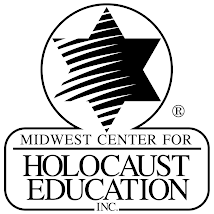In May 2005, I had the good fortune to be selected to travel to Poland for the
March of the Living.
In honor of the 40
th anniversary of the Vatican II Council’s declaration
Nostra Aetate, the organizers of the March invited Catholic school teachers.
I was teaching in the Diocese of Kansas City and St. Joseph at the time.
Word filtered down to my principal, and I immediately signed up.
The experience truly was life changing, deepening my grasp of such a fundamental period in history.
Returning to the classroom, the message became clear to me:
it is imperative to teach the history of the Holocaust in Catholic schools.
The Church’s declaration in
Nostra Aetate laid the groundwork for opening a productive dialogue between the Catholic faith and the Jewish faith.
Most important in this document is the removal of the
blood libel held for centuries, and spoke actively against anti-Semitism.
The historic teachings of the Catholic faith created a wedge that displaced the Jewish faith, and created animosity.
With the publication of
Nostra Aetate, the Church redefined the relationship, opening a door to a common ground.

"The Martyrdom of Simon of Trent" Gandolfino d' Asti, late 15th century.
A famous blood libel allegation in Trento, Italy, in 1475.
In 1998, the Holy See published
We Remember: A Reflection on the Shoah.
Pope John Paul II charged Catholic educators to help our students understand the implications of the
Shoah, and the role of the Church in the events.
The Pope called on Catholics to repent for sins of commission and for sins of omission for centuries of negative teachings about Judaism that helped allow the
Shoah to take place.
The National Conference of Catholic Bishops released guidelines for Catholic educators to teach the Holocaust.
Holocaust studies should be taught in Catholic schools, as the role of Catholicism and Judaism are historically intertwined.
Pope John Paul II called on members of the Church to understand the consequences of the actions of men, and to not allow it to happen again.
Catholic educators are in a position to carry out this mission.
Whether in a Social Studies classroom, Language Arts classroom, or even religion classroom, the memory of the
Shoah should not fade.
Catholic social teachings demand that we care for those who do not have a voice of their own.
Let us never again turn our back on another.
The teachings of the Church are clear: We are called to witness the cruelty that silence begets.
We must not hide from our mistakes as an institution, but learn from it, teach it to our young, and grow as a community.
Resources:
Nostra Aetate
We Remember: A Reflection on the Shoah
Catholic Teaching on the Shoah: Implementing the Holy See's We RememberNational Catholic Center for Holocaust EducationThe Holocaust: A Teaching Guide for Catholic SchoolsBearing Witness - Professional Development for Catholic EducatorsResources available in the MCHE Resource Center:Sister Rose's Passion - DVD
The Longest Hatred - video
Guidelines For Teaching The Holocaust in Catholic Secondary SchoolsCatholic Teaching on the Shoah: Implementing the Holy See's We Remember




